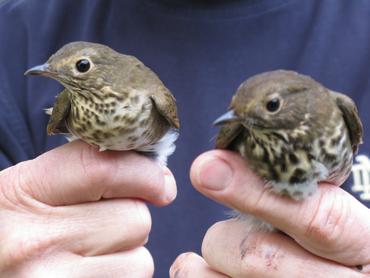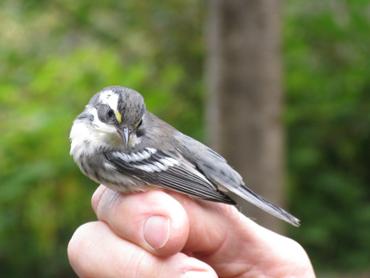



Author: Chris Roth
Published in Communities Magazine Issue #153
Thirty-five years ago, this issue’s theme would have left readers scratching their heads—the term “permaculture” did not yet exist. Today, while not yet universally familiar in the mainstream, permaculture has become a household word in many communities. To assure that readers are up to speed with our current theme (and to repeat some of what appears elsewhere in this issue), here’s a paraphrased version of what Wikipedia, that bellwether of “accepted definition,” has to say:
Permaculture is an approach to designing human settlements and agricultural systems modeled on the relationships found in nature. Based on the ecology of how things interrelate, it aims to create stable, productive systems that provide for human needs. In permaculture design, each element supports and feeds other elements, ultimately aiming at systems that are virtually self-sustaining and into which humans fit as an integral part.
Permaculture as a systematic method was developed by Australians Bill Mollison and David Holmgren during the 1970s. The word “permaculture” originally referred to “permanent agriculture,” but was expanded to also stand for “permanent culture” as it was seen that social aspects were integral to a truly sustainable system. Mollison has described permaculture as “a philosophy of working with, rather than against nature; of protracted and thoughtful observation rather than protracted and thoughtless labor; and of looking at plants and animals in all their functions, rather than treating any area as a single project system.”
Permaculture’s three primary ethics, Care for the Earth, Care for People, and Fair Share (“set limits to consumption and reproduction, and redistribute surplus”), support a set of design principles which suggest how to apply these values in practice. As articulated by David Holmgren, these include:
1. Observe and interact.
2. Catch and store energy.
3. Obtain a yield.
4. Apply self-regulation and accept feedback.
5. Use and value renewable resources and services.
6. Produce no waste.
7. Design from patterns to details.
8. Integrate rather than segregate.
9. Use small and slow solutions.
10. Use and value diversity.
11. Use edges and value the marginal.
12. Creatively use and respond to change.
(For more information about the above, see en.wikipedia.org/wiki/Permaculture#Holmgren.27s_12_design_principles and permacultureprinciples.com/principles.php.)
Permaculture Design Courses have trained thousands of students all over the globe, who themselves have taught many others while applying permaculture principles and techniques in the design of everything from gardens to ecovillages. Today, most ecologically-oriented intentional communities and towns seem to have at least one if not several trained permaculturalists, and permaculture’s influence has spread far beyond the graduates of its courses.
This issue’s articles address a wide range of permacultural concerns, from social permaculture to hugelkultur methods, and (mostly) that middle ground where human and nature, social organization and ecological living skills, people care and earth care, intersect. We hope you find them both instructive and inspiring.
• • •
At the risk of veering into unauthorized permacultural territory, or of offering obvious, common-sense advice (feel free to skip what follows, if you’ve learned these lessons already), I do have a few thoughts to add, based on my own permacultural experiences…
Attending to Zone Zero
“Do not burn yourselves out. Be as I am—a reluctant enthusiast….a part-time crusader, a half-hearted fanatic. Save the other half of yourselves and your lives for pleasure and adventure.”—Edward Abbey
“Please secure your own oxygen mask first before helping others.”—Natalie
Permaculture books and courses deal extensively with Zones One (the house and its immediate surroundings) through Five (the “wildlands”). However, after decades focusing on those outer zones, I’ve come to believe that the very most important zone is Zone Zero, our inner selves and our own bodies, upon which our interactions with those other zones utterly depend.
My exposure to permaculture began 25 years ago, and has continued almost unabated since, in several permaculturally-oriented communities and teaching centers in which I’ve lived and worked. During most of that time, I coordinated or co-coordinated the annual vegetable gardens—a curious, paradoxical role. Incorporating some permacultural techniques, these gardens focused on relatively conventional crops and often used very labor-intensive methods—a far cry from the image of the permaculturalist lying in a forest garden letting perennial food crops drop into his or her mouth.
This work of “cranking out vegetables”—while apparently necessary in order to feed homegrown food to the large populations in these settings—did not always harmonize in spirit with permaculture’s principles and values, and often encouraged and reinforced attitudes in me that were less than sustainable. Permaculture itself is partly an attempt to counter the deeply-ingrained cultural mindset behind agriculture—which, in its attempts to control and dominate, to assert human will in ways that work against nature, has largely exhausted its own resource base and brought the human species a host of problems in how we treat the world, one another, and ourselves.
Many of us come to organic gardening/farming or permaculture with a zeal to change the world and do things differently. Unfortunately, seeking salvation from an unsustainable culture of origin by throwing ourselves into these new endeavors is much easier than figuring out how to live a balanced life while doing so—one that will allow us to endure for the long haul. We bring our personal and cultural baggage with us as we attempt to enter the permaculture paradigm. Too often, it’s that baggage that is running us, even as we “do” permaculture.
My more than two decades of frequently workaholic gardening (during which I often paid much more attention to the garden than to my own well-being) seem to have derived at least as much from “old paradigm” attitudes as new. Those years have led me to knee problems that recently have prevented me from gardening at all, while affecting many other areas of my life too. While I am grateful for all the lessons I’m now learning (about patellas, inflammation, electrical muscle stimulation, and deer antler spray)—as well as the many people who have helped me through this transition—this is not what I bargained for when I decided to live in harmony with the earth through food-growing.
Permaculture’s basic principles (see above) can apply not only to design of landscapes, dwellings, and economic and social structures, but also to the human self, to how we each live. However, their wording doesn’t always make this self-evident. So here are some additional guidelines—seemingly simple common sense—which too many of us may have ignored because of the power of our conditioning:
1. Don’t try to save the world.
It can’t be saved. It can only evolve. We can make the journey a little better for ourselves and others, and contribute to a healthier future, but usually not through desperate individual measures. A community of healers can achieve much more than a cadre of martyrs.
2. Don’t try to compensate for the world’s imbalance.
A sustainable world would require many more people to be involved in growing their own food, living closer to the land, pushing their bodies further and harder to provide for their own needs. This doesn’t mean that gardeners, farmers, and permaculturalists need to make up for all the people who aren’t living that way by doing many times their share of those things. As fossil fuels become much less available, our bodies become more needed. Taking the world upon our shoulders now could mean we are unable to shoulder anything later.
3. Make friends with your survival instinct.
In our zeal to live in right relationship with the rest of the world, some of us may believe that our own survival doesn’t matter to us as much as living (or dying) in what we believe to be integrity—misunderstood as having no impact on other creatures or the earth. More than a few principled people have said to themselves, “I would rather die than take the innocent life of another sentient being”—only to realize, once the reality of physical decline sets in, that they actually do want to be healthy and survive, that life feeds life, that transformation is the name of the game, and that their lives are blessings, if they can treat them that way.
4. Don’t try to please, and don’t try to be perfect.
The more we base our actions on trying to please others (or our own inner slave-drivers), the more we may sabotage our own well-being. Perfection is impossible. Our gardens will never be weed-free. If our sense of self-worth depends on living up to unattainable standards (someone else’s or, more dangerous, our own), we will be miserable much of the time. We may be admired and even praised for pushing ourselves so hard, but that can’t last. Better to stop and ask ourselves: If we were still children, in touch with what mattered to us then, would we be doing this?
5. Row your boat gently. (Don’t panic and don’t stress.)
Very few things are as time-critical or important as we may think they are. If we habitually make unessential goals or issues so important that they impede our ability to keep ourselves healthy and safe, we may eventually hurt ourselves in ways we can’t reverse. Life is but a dream—but it can be a good one or a “bad” one depending on how we navigate it. If the rowing seems frantic or stressful rather than merry, we are not doing permaculture.
6. Remember that you will age.
Each of us will, no matter how much we wish otherwise or remain in denial. The more we try to prove that aging won’t happen to us, the farther the “fall” will be when it happens. Though it may not be easy, it behooves us to listen to those who encourage us to take care of our bodies better, before they wear out.
7. Respect your knees.
They might work fine now. They may not always. The temporary ability to pound them by running on pavement, or to bend them and stress them as most others can’t, doesn’t make it a good idea. Our knees almost certainly weren’t designed by God, though they might feel that way for several decades. Studying the anatomy of our knees, and looking up exercises and self-care tips before we injure them, is never a waste of time. Injured knees need immediate attention—and physical therapists often know more than doctors. Avoiding injury is the best approach.
8. Don’t take anything for granted.
The fact that we have bodies that function at all, and the ability to meet our basic needs (if we are fortunate enough to), is something to be supremely grateful for. Yet we get caught up in personal turmoil, interpersonal dramas, and various things that would seem absolutely unimportant if any of the major pillars of our physical lives were taken away. How many of us imagine what it would be like to not be able to walk, or see, or hear? It could happen, sooner than we expect, to any of us. We increase the danger by failing to care for Zone Zero.
9. Apply self-regulation and accept feedback.
(This one should sound familiar.) We increase our personal sustainability by assessing what is working in our lives and what isn’t, and making adjustments that will allow us to be healthier and happier. We benefit by listening to others who give us feedback, even if it is hard to hear. They may have something valuable to tell us, and that feedback has much less capacity to hurt us than we ourselves have, by ignoring it.
10. Make friends with the void.
Filling up every available moment with “doing” leaves little time for “being”—and leads to taking “being” for granted. We won’t be able to “do” forever. If we “do” too fervently, we just might disable ourselves from further “doing.” Then “being” will be significantly more difficult. And “not being” will be even more troubling, if we’ve never seriously appreciated it as the foil for “being.”
11. Deal with your emotional distress.
Unaddressed emotional distress will eventually find an outlet, a manifestation that can’t be denied. Far better to confront emotional pain head-on, instead of running from it until it catches up with us in ways that may no longer be resolvable through emotional processing. If, instead, we make friends with ourselves—including the scared, scarred parts—the world will become a lot less scary, a place primarily of healing rather than hurt.
12. Look around you, and allow beauty in.
The old story: Stop. Breathe. Listen. Observe. Experience. It’s important—at least as important as work. Actually, it’s more important.
I am hoping that the above advice will seem self-evident and silly to as many readers as possible. I’m encouraged to meet so many younger permaculturalists who already know and live in accordance with most of these guidelines. But for those of us who’ve been caught most seriously in the clash of old and new paradigms, I hope they offer some reinforcement so that we, too, can make it for the long haul into a more permacultural future.















boiester
Wisdom does come with age. Thanks for your article; it demonstrates the zeal of youth, and the perspective of experience.